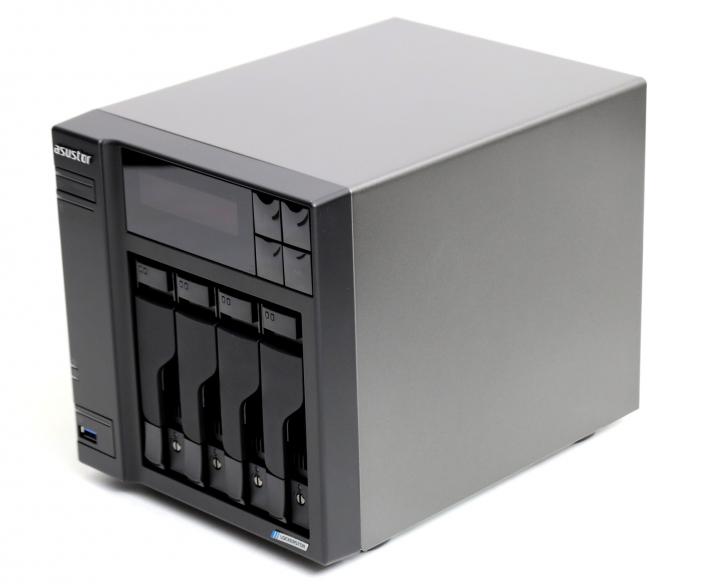Product Gallery
Located at the backside, we can see a ventilation hole. The unit is _very_ silent at default configuration. It will regulate fan RPM depending on the temperature and/or configurable fan preference. You can configure power-saving and fan options in the software suite. There are a few connection options including USB 2.0/3.0/3.1 (one at the back, one in the front).
- CPU: Quad Core p Celeron rocessor
- Memory: 4GB DDR4
- Memory Expandable up to: 8GB (two channels)
- HDD: 4 x SATA3 6Gb/s; 3.5"/2.5"
- 1x M.2. Storage
- Expansion: USB 3.1 Gen-1 x2
- Network: 2.5 Gigabit Ethernet x 2
- Output: HDMI 2.0a
- System Fan: 120mm x 1
- Power Supply Unit / Adapter: 90W x1
- Input Power Voltage: 100V to 240V AC
At the front side, you can see a USB 3.1 connector on the lower left. There are also LED indicators for the operational status of the NAS. You'll find the power button and status LEDs to the top left, and then to the right, the status display, and configuration buttons.
You can easily access the four HDD/SSD bays. Pop in four 16 TB HDDs in there, and you'll have the ability to create a 64 TB NAS cluster. It looks good with the dark design. Over a single 2.5 Gigabit jack, this unit is capable of read speeds of 250~300 MB/s. We'll show you that in the benchmark results, of course. Link aggregation is still possible as well; you can nearly double that to 5 Gbps, albeit I feel that link aggregation is a dying thing in the SOHO and consumer space; I bet most people do not even know of its existence as it is too complicated and expensive to create an infrastructure for it.
Here you are looking at the bottom; the unit rests on four rubber feet to prevent resonating noises from the HDDs.





